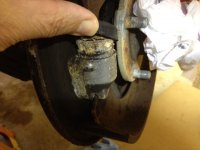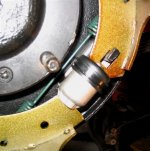Randy Forbes said:
Healey Rick: the point of checking bump/bounce was if the original poster had decided to use a brake hose that the length was suspect; I'd expect a correctly specified part to fit, though when they're being fitted, it's easy to check full left/right clearance at full droop. It's the full bump tests that are a pita.
Randy,
I totally agree with your point. What I was trying to say, perhaps not clearly enough, was that <span style="font-weight: bold">IF</span> the Moss specified part was shorter than that originally supplied, it shouldn't be up to the consumer to determine if it will perform with equal safety to an OEM part. If I'm buying a direct replacement part of a safety related item, I expect to be able to bolt it on and that it should perform like an original. (I'm not sure at this point, whether there is any difference between the Moss part and an original as NEVets has indicated in a later post that there may not be a difference)
I may be overreacting, but after one supplier provided Moss with brake masters that required a recall:
https://www.mossmotors.com/SiteGraphics/Pages/BrakeMasterRecall.pdf I'm wary of any part that doesn't meet original design specs. I can accept the fact that a repro grille isn't made to the same quality as an original, but it's a whole different ballgame when we're talking the braking system.

 Hi Guest!
Hi Guest!

 smilie in place of the real @
smilie in place of the real @
 Pretty Please - add it to our Events forum(s) and add to the calendar! >>
Pretty Please - add it to our Events forum(s) and add to the calendar! >> 



